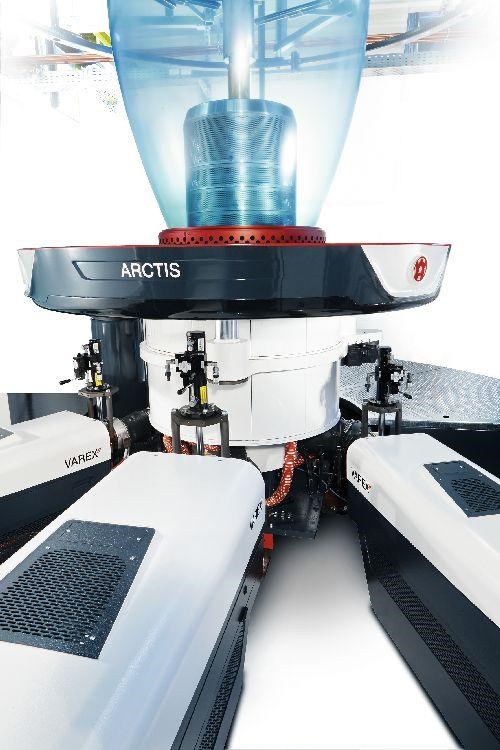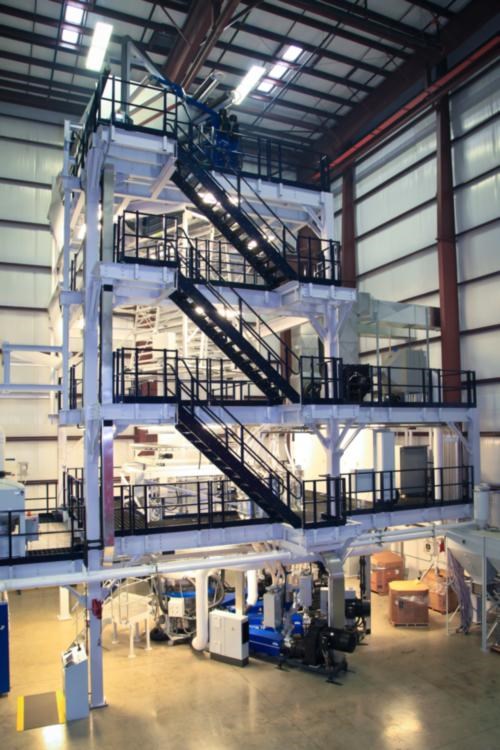Lots of Expansion Brewing In Film Extrusion
Firms adds more capacity to produce higher-tech films.

There’s been a spate of expansion news in film extrusion, as processors are reporting new installations at breakneck speed.
Most recently, Next Generation Films, Lexington, Ohio, announced that it has ordered three blown film lines from Windmoeller & Hoelscher, Lincoln, R.I., to bolster its capacity for its core business and build up its presence in the barrier film market.
Next entered the barrier film market in mid-2012 and has ordered two Varex II lines, one 87-in., 7-layer line and one 103-in. , 9-layer line, to cultivate this segment of their business. Notes Dave Frecka, founder & CEO at Next, “We want to solidify our position as a key player on the growing barrier market and are investing in the technology we need to do so.”
Varex II was introduced at the K 2013 in Düsseldorf as the successor to the well-known Varex line. W&H engineers spent roughly three years reviewing each component of the existing range, making both small and large changes to improve output, safety and efficiency.

The third line ordered, a 126-in. 5-layer Varex, will be installed this spring and used to support the company's core business.
Meantime, BJK Flexible Packaging, a specialty films producer based in Louisville, Ken., has expanded its film production capacity with the addition of a new five-layer blown film line from Reifenhauser Inc., Wichita. Kan. The company recently installed and commissioned the new line (see photo bottom) in an all-new 30,000 ft² addition that it built specifically for that purpose at its Louisville headquarters.
The new film line started running in November. It will be used to produce five-layer film structures that will provide a better alternative than 3-layer structures, according to Brian Krein, Chairman and CEO of BJK. The 110-in. wide line is equipped with with a 550-mm die and is capable of running more than 1,500 lb/hour of material. “It’s our feeling that 3-layer’s future for many film segments will move to 5-layer,” Krein noted. “5-layer films allow more flexibility in general to extrude for specific applications.” These sentiments are consistent with those expressed by ExxonMobil in meetings with Plastics Technology at last year’s K 2013 show.
Leading U.S. stretch film producer Sigma Stretch Film, meanwhile. recently installed two stretch film lines from Gloucester Engineering, Gloucester, Mass. including a 5-layer cast stretch film line to the company’s facility in Shelbyville, Ken., and a 5-layer blown stretch film line (see photo above) in Belleville, Ontario. The cast film line has been in production since October 2013 and the blown film line will be in production early this year.
The 9-up cast stretch film line includes four Contracool extruders equipped with PIB injection that feed a Cloeren feed block and auto die. Also included is a casting unit with temperature control unit (TCU) and a 1002-DS Surface-Center winder with dual overlapping single turrets. The line is enhanced with resin vacuum loading, loss-in-weight blending, gauging, profile control and a trim reprocessing system all controlled by the Extrol 6032 control system.
The five-layer blown stretch silage film line includes five Contracool extruders equipped with PIB injection feeding a low profile five-layer IBC die and air ring. Also included are a bubble cage, Traversanip oscillating primary nip roll with composite roller collapsing frame, secondary nip roll, and a dual turret 1002-D Surface-Center winder. The line is enhanced with resin vacuum loading, feed throat gravimetric blending, and a trim reprocessing system all controlled by the Extrol 6032 control system, and containerized controls.

Related Content
Cooling the Feed Throat and Screw: How Much Water Do You Need?
It’s one of the biggest quandaries in extrusion, as there is little or nothing published to give operators some guidance. So let’s try to shed some light on this trial-and-error process.
Read MoreFully Automated Extrusion Process Enables Use of Composites for Manufacturing Pressure Tanks
Amtrol was looking for a more cost-effective means to produce thin-wall liners for a new line of pressure tanks. With the help of a team of suppliers, they built one of the world’s most sophisticated extrusion lines.
Read MoreAvoid Four Common Traps In Granulation
Today, more than ever, granulation is an important step in the total production process. Our expert explains a few of the many common traps to avoid when thinking about granulators
Read MoreHow Much L/D Do You Really Need?
Just like selecting the extruder size and drive combination, the L/D should be carefully evaluated.
Read MoreRead Next
Beyond Prototypes: 8 Ways the Plastics Industry Is Using 3D Printing
Plastics processors are finding applications for 3D printing around the plant and across the supply chain. Here are 8 examples to look for at NPE2024.
Read MoreLead the Conversation, Change the Conversation
Coverage of single-use plastics can be both misleading and demoralizing. Here are 10 tips for changing the perception of the plastics industry at your company and in your community.
Read More
























